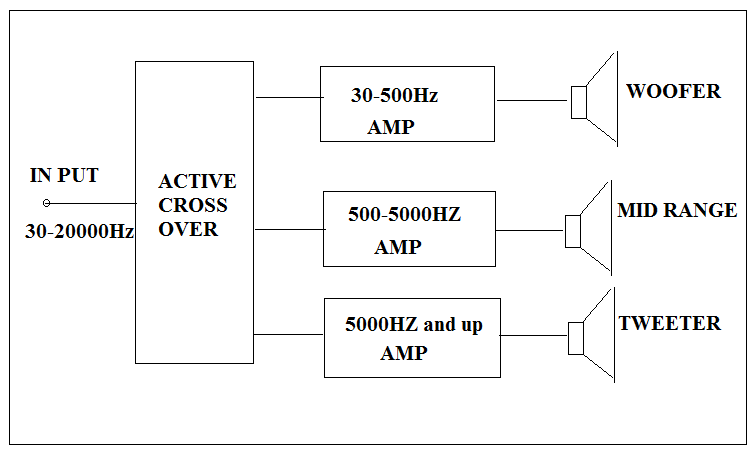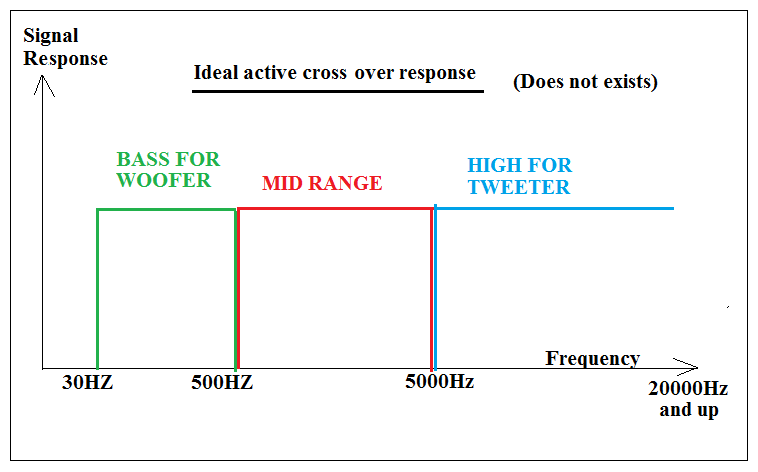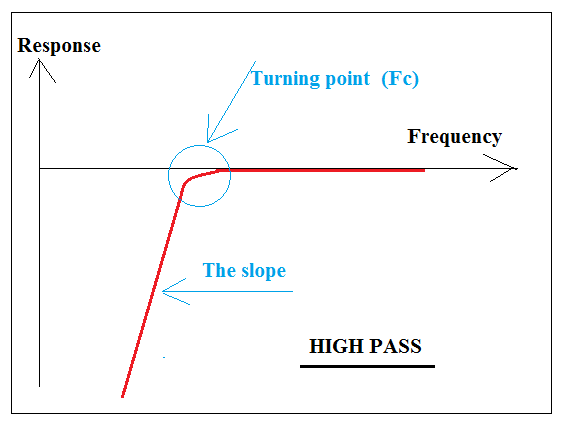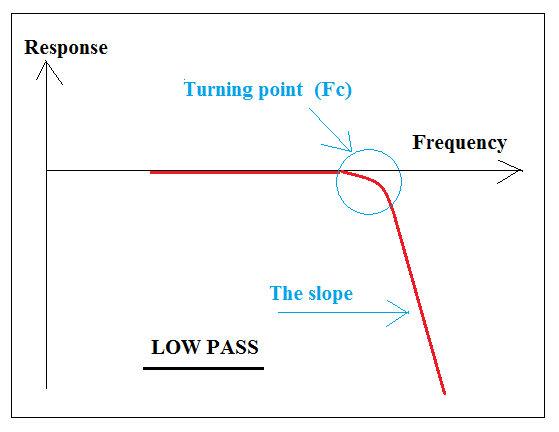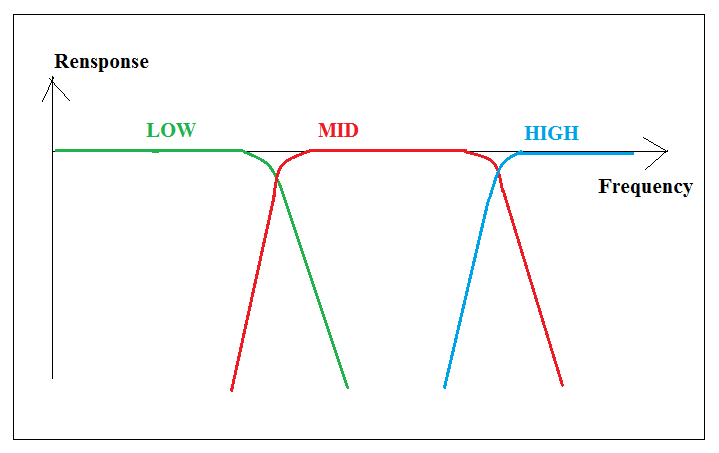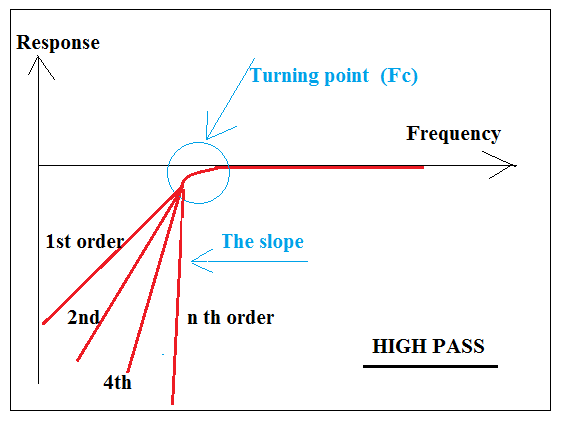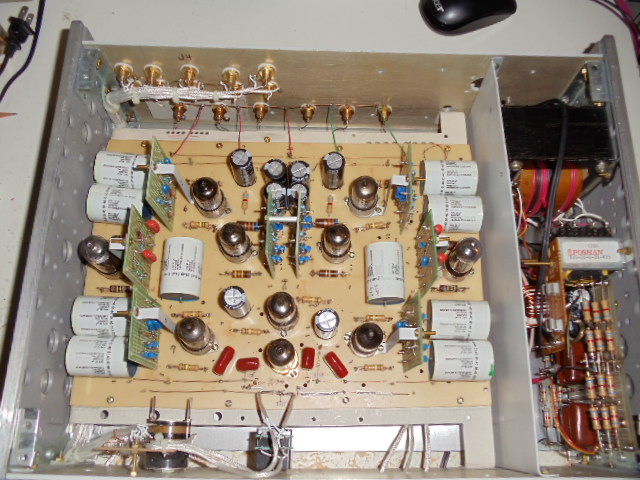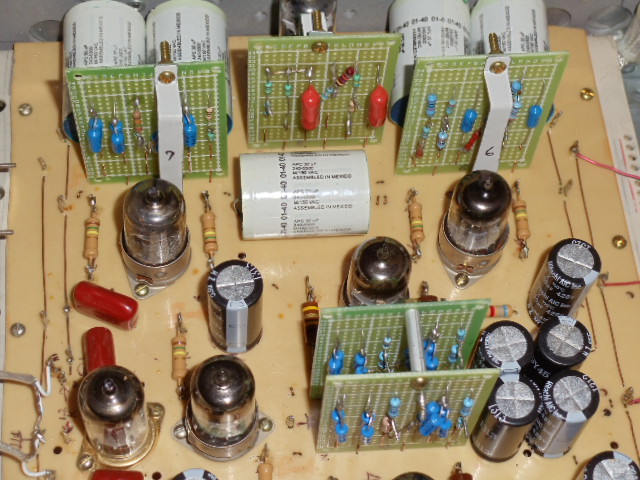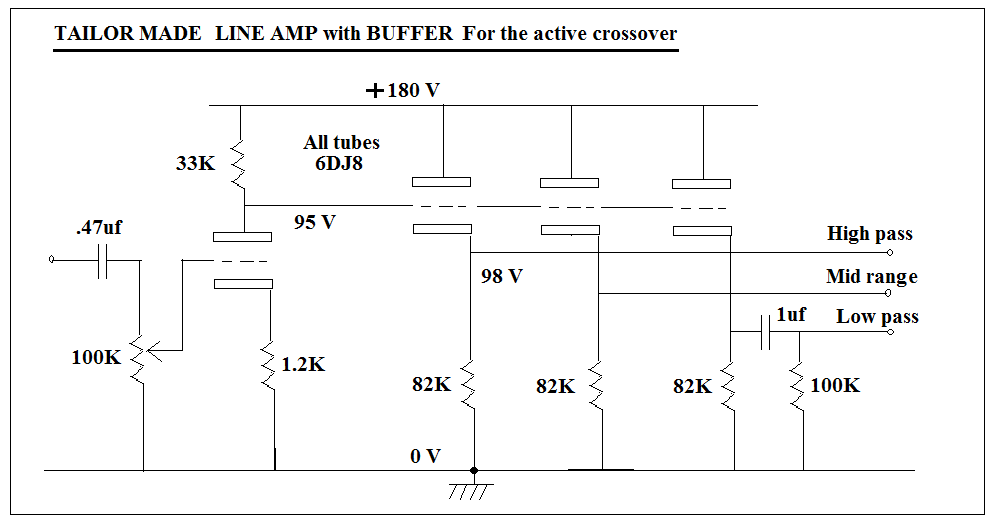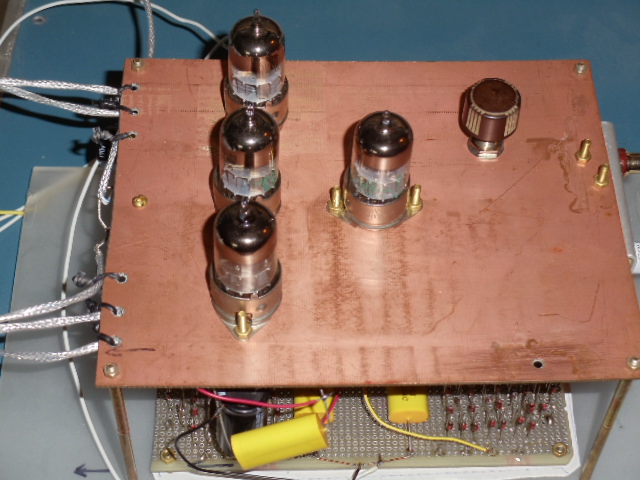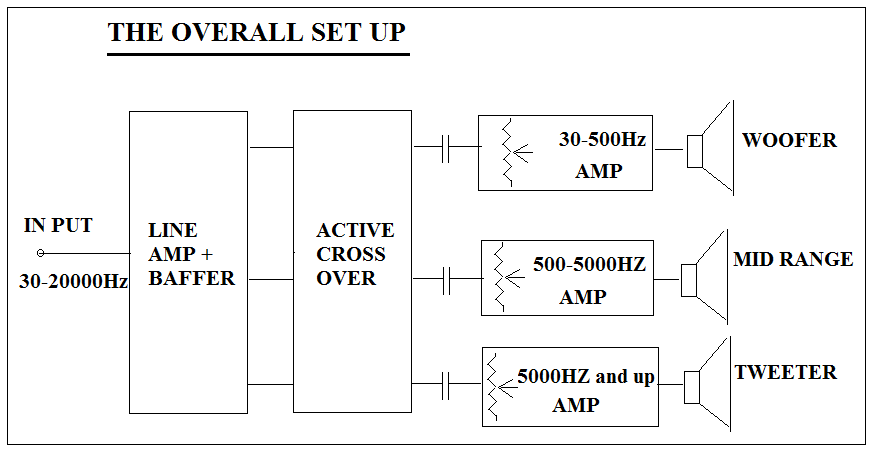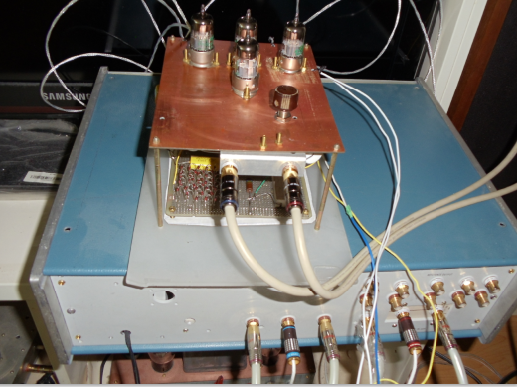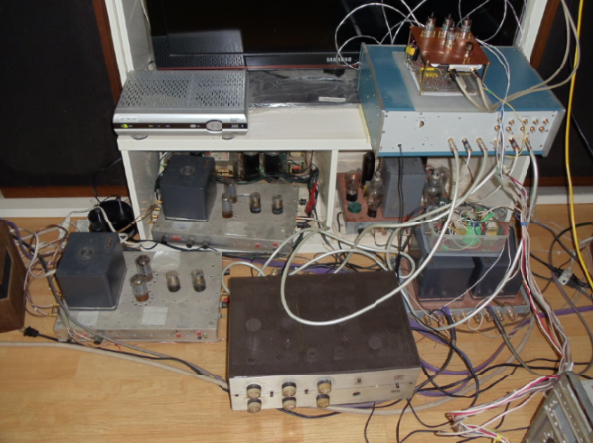As one speaker unit can’t deliver full range music (50Hz to 20000Hz) and then had to be divided into three ways as the woofer, midrange and tweeter. So that passive crossover RCL network inserted between amp output and speaker units, this reduces transparency and punch.
Active crossover works in front of the power amps and divided the signal into multi-channels so that speakers directly connects to amp output to eliminate passive RCL networks, please see picture:
The ideal case of active crossover response but does not exist:
The reality is an approximation, a typical high pass filter response:
a typical low pass filter response:
The overall picture will be like this:
The number of order for filters:
The 4th order filter slope is more close to ideal than 1st order, n-th order even better but technical difficulty resists. My active crossover (active filter) uses 4th order. This is achieved by two 2nd order filter connected in series.
The damping factor of the 2nd order filter affected the turning point profile a lot as well as the sound quality, I show a low pass filter as example, see picture:
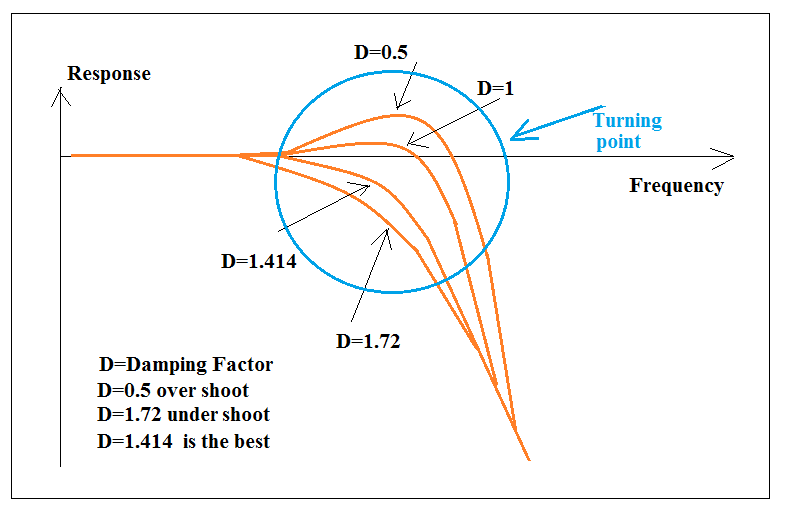
The damping factor of the filter less than 0.5 will cause high-frequency ringing, more than 1.72 will go too far away from the ideal slope. D=1.414 is the norm.
To build a 2nd order active filter with operating amplifiers is simple and lots of information in web pages. This is because the output impedance of modern operating amplifiers is low enough to be ignored without affecting the design calculation. Besides, the OP AMPs can easily achieve a unit gain (gain=1), so that the design process becomes an easy job.
But if we use a vacuum tube to build the machine the story will be very different, the sound will be different as well. The output impedance even cathode follower will be large as few hundred ohms, the gain varies between 0.94 to 0.98, all of this has to be considered in design calculation.
The typical cathode follower likes this, please see picture:
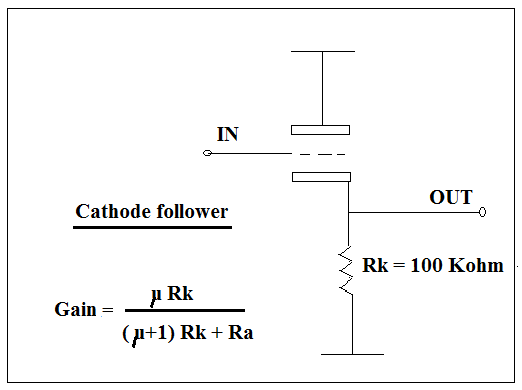
For 6DJ8 u=33, Ra=3K Gain=0.97
For 12AX7 u=100, Ra=80K Gain=0.98
For 6FQ7 u=19, Ra=7.7K Gain=0.947
If we change the Rk to 50 Kohm, the gains remain almost unchanged, so that the output loading impedance changing will not affect the gain and we consider the gain is constant.
We start from a 2nd order 12db low pass filter, the circuit is simple, Rk present as 100Kohm and even changing value will not affect the operation. But the calculation of R1, R2, C1 and C2 is a bit tricky, the turning point frequency, damping factor and voltage gain have to be considered.
The actual circuit of a second order low-pass filter:
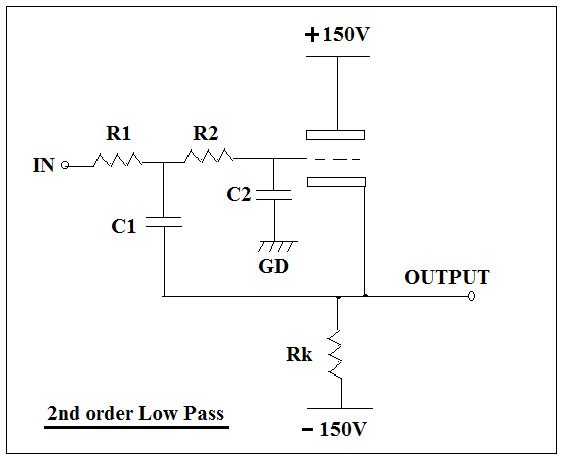
The frequency response would like this:
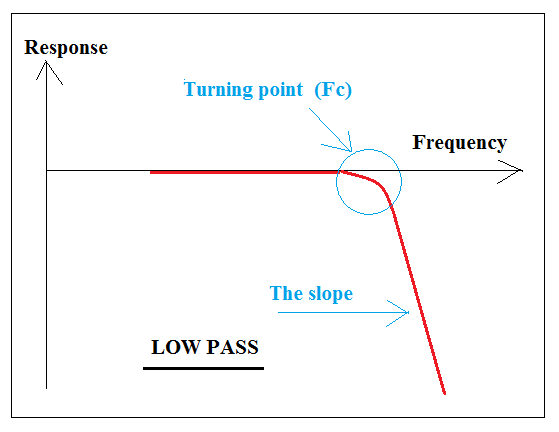
This low pass filter will work for woofer so that the turning frequency = 500 Hz and 6FQ7 selected. Damping factor is fixed at 1.414 and the voltage gain is 0.947 for 6FQ7, the correct formula please see picture:
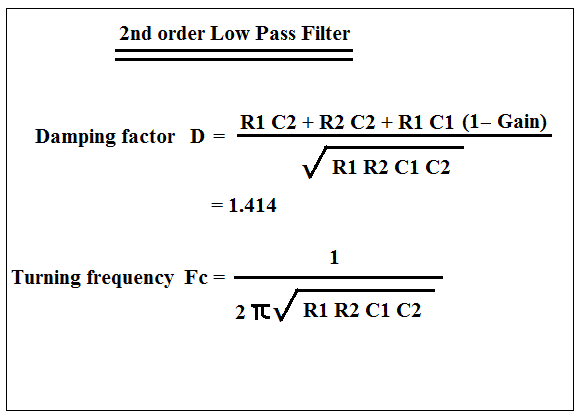
Preset value:
D=1.414
Gain=0.947
Fc= 500Hz
C1= 0.015 (preselected)
C2= 0.005 (preselected)
Calculated value:
R1= 57.36 K (56 K in series with 1.2 k)
R2= 23.55 K (22k in series with 1.5k)
Put these values to the formula will prove D=1.414 and Fc= 500Hz
Two 2nd order low-pass filters connected in series will get a 4th low pass filter (24db), and it was done:
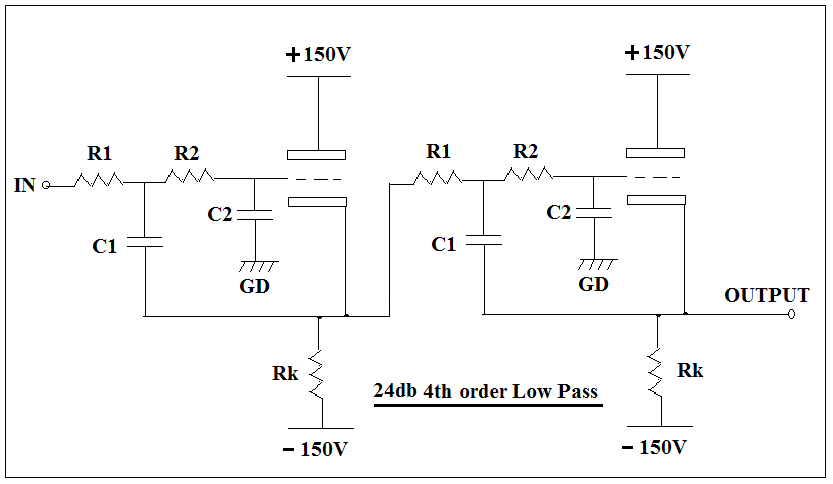
The actual circuit of a second order high pass filter:
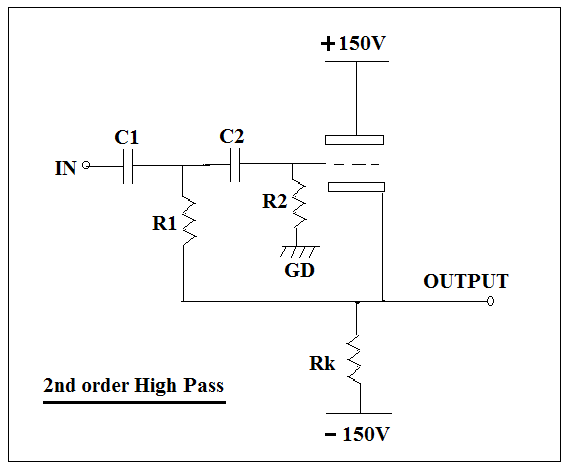
The frequency response would like this:
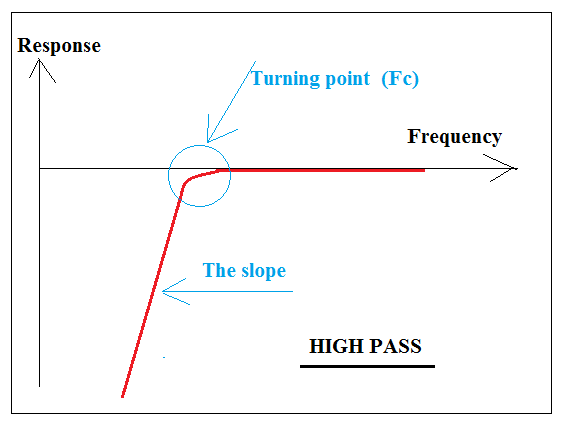
This high pass filter will work for tweeter so that the turning frequency = 5300 Hz and 6DJ8 selected. Damping factor is fixed at 1.414 and the voltage gain is 0.97 for 6DJ8, the correct formula please see picture:
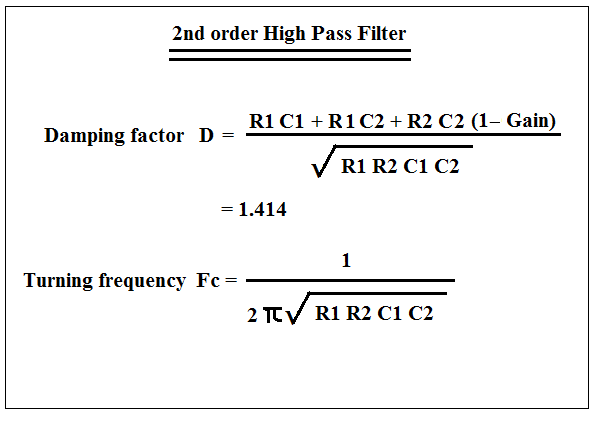
Preset value:
D=1.414
Gain=0.97
Fc= 5300Hz
C1= 0.00047 (preselected)
C2= 0.00047 (preselected)
Calculated value:
R1= 43.78 K (39 K in series with 4.7 k)
R2= 93.24 K (91 k in series with 2.2k)
Put these values to the formula will prove D=1.414 and Fc= 5300Hz
Two 2nd order high pass filters connected in series will get a 4th high pass filter (24db), and it was done:
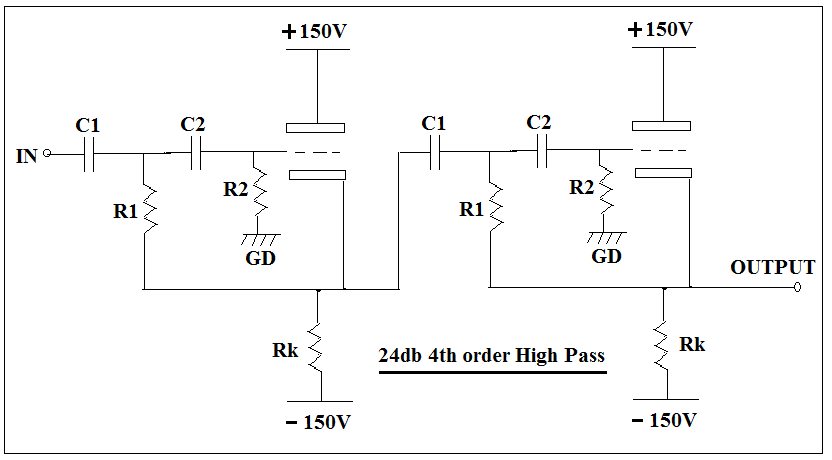
For the 288 it works between 500Hz and 5300Hz so that a 500Hz high pass filter and 5300Hz low pass filter work together see picture:
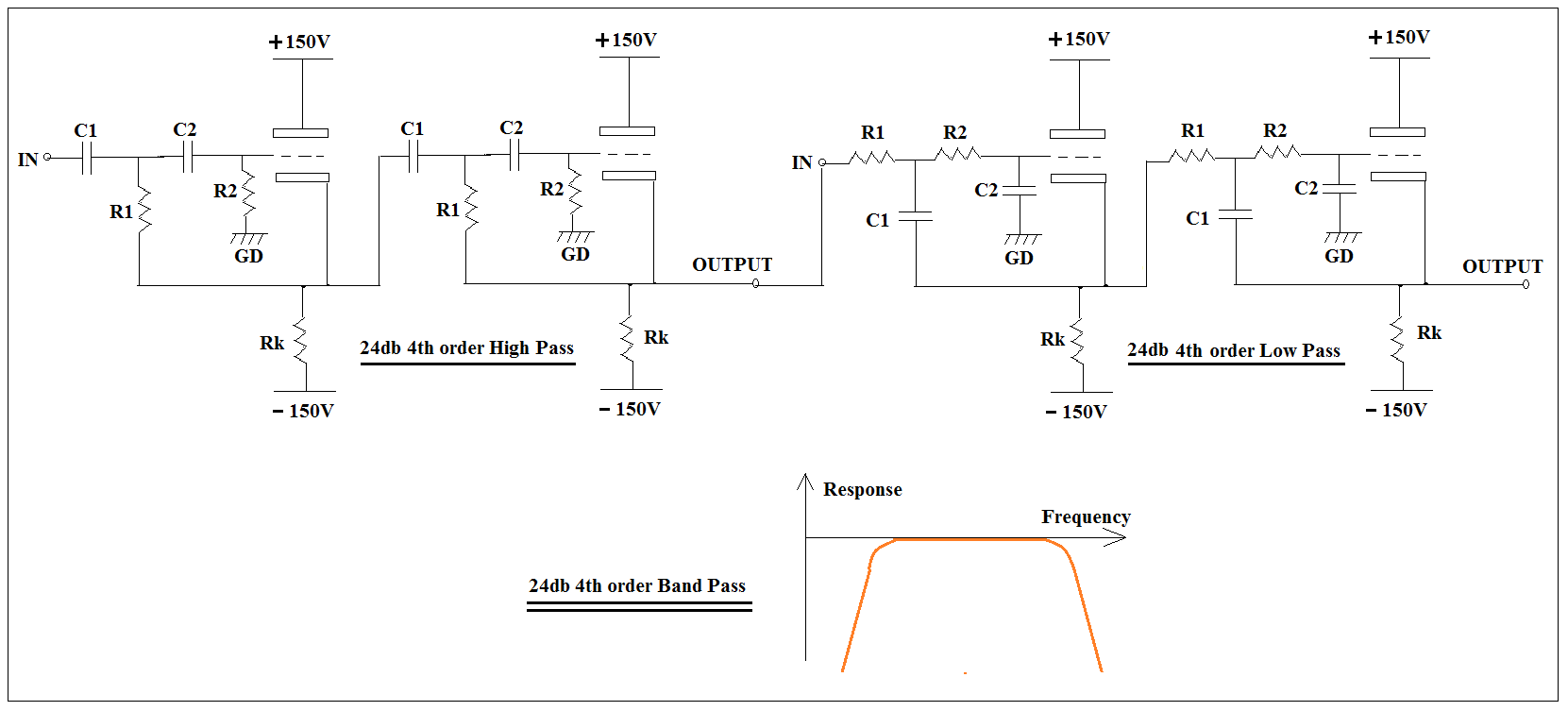
For mid-range filter, we select 12AX7 the voltage gain is 0.98
Preset value for high pass portion:
D=1.414
Gain=0.98
Fc= 500Hz
C1= 0.0033 (preselected)
C2= 0.0033 (preselected)
Calculated value for high pass portion:
R1= 66.81 K (56 K in series with 10 k)
R2= 139.25 K (100 k in series with 39k)
Put these values to the high pass formula will prove D=1.414 and Fc= 500Hz
Preset value for low pass portion:
D=1.414
Gain=0.98
Fc= 5300Hz
C1= 0.001 (preselected)
C2= 0.00033 (preselected)
Calculated value for low pass portion:
R1= 93.9 K (82 K in series with 12 k)
R2= 29.1 K (27k in series with 2.2 k)
Put these values to the low pass formula will prove D=1.414 and Fc= 5300Hz.
The active filter was built like this:
A tailor made line amp with buffer to drive the crossover, see pictue:
Temporary build the line amp and buffer stick to specification, actually measured frequency response 20Hz to 30,000Hz flat with output signal cable, which having strayed capacitance 200pf, connected:
The overall set up connection, one channel only, stereo wants two channels, see picture:
Thank you for visiting!
